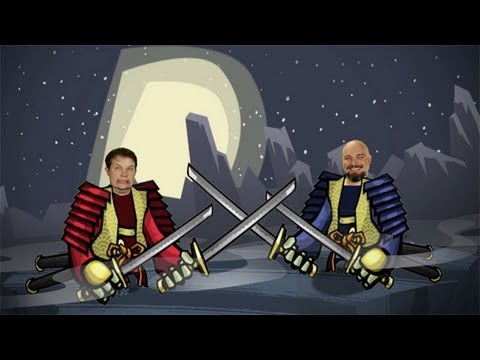Neil Gaiman Answers Questions About Mythology
Summary
In this article, we explore Neil Gaiman’s insights into mythology, as he answers questions from Twitter users. Gaiman explains the connections between Viking and Greek gods and myths, and discusses the possibility of riding a minotaur like a horse, the reason why Anubis has a dog head, and the appearance of biblical angels. He also delves into the details of Ragnaro, the last great battle in Norse mythology, and the terrifying stories of Germanic folklore.
Table of Contents
- The Link Between Viking and Greek Myths
- Riding a Minotaur and the Dog Head of Anubis
- Ragnaro: The Last Great Battle
- Germanic Folklore and Terrifying Stories
- The Sandman’s Adorable and Practical Death
- Loki’s Transformation and Pandora’s Jar
The Link Between Viking and Greek Myths
Neil Gaiman explains how Viking and Greek gods and myths are linked through the exchange of tales between different cultures. He notes that many gods in Greek mythology are related to Zeus, and that the gods and goddesses in Norse mythology are often related to each other. Gaiman also discusses the possibility of a minotaur being ridden like a horse, and how the appearance of biblical angels is often different from what people expect.
Riding a Minotaur and the Dog Head of Anubis
Gaiman answers a question about whether it is possible to ride a minotaur like a horse. He explains that minotaurs are typically depicted as being too large and powerful to be ridden, but that it is possible to imagine a smaller, more manageable version. He also discusses the reason why Anubis has a dog head, explaining that it is because dogs were associated with death and the afterlife in ancient Egypt.
Ragnaro: The Last Great Battle
The speaker describes Ragnaro as essentially the last great battle in Norse mythology. He explains that it is a civil war that gets worse with the arrival of Frost Giants led by Surt and Loki, resulting in a final battle that ends with everyone dead. The dead Viking warriors come back on a ship made of nails, and the few survivors start anew.
Germanic Folklore and Terrifying Stories
Gaiman discusses Germanic folklore, which is known for its terrifying stories. He notes that the most well-known gods in Norse mythology are Odin, Frig, and Loki. He also explains that the stories often involve characters who are transformed into animals or who are tricked by others.
The Sandman’s Adorable and Practical Death
Gaiman talks about how Death is depicted in The Sandman as adorable and practical. He notes that this was intentional, as he wanted to create a character who was both likable and approachable. He also explains that Death’s appearance was influenced by the punk rock scene in the 1980s.
Loki’s Transformation and Pandora’s Jar
Gaiman discusses how Loki is known for transforming into a female form in Norse mythology. He notes that this is just one example of the fluidity of gender roles in mythology. He also explains that Pandora’s Box is not actually a box, but a jar given to Epimetheus by the gods, containing Pandora.







